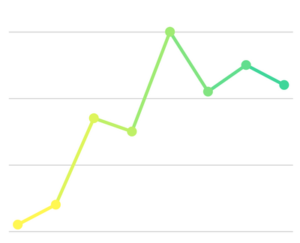Trade Modelling: Model behaviour?

Model Behaviour: Understanding some recent debates on the UK’s trade prospects after Brexit.
Brexit has managed to make trade modelling trendy. Perhaps that’s an exaggeration. But at least it has brought it out of the academic journals and into the broadsheets.
The latest sparring has seen claims that the civil service’s trade modelling is unduly pessimistic about the UK’s prospects outside the EU, and specifically outside the EU’s customs union and single market. The argument matters because it ties in to a policy choice the UK has to make: how far it should prioritise deep integration with the EU versus retaining as much liberty as possible to strike trade deals with the rest of the world.
What are we to make of the arguments over trade modelling?
All modelling involves some abstractions from reality. They key is whether these are defensible. At a minimum, models cannot ignore real life aspects of trade. Here, two things in particular matter. The first is that a lot of countries trade similar, but differentiated, goods. Differentiation can take place at a number of levels – the quality of the goods, the cachet or reputation associated with where they are made, and the brands under which they are marketed. And so forth. Trade models need to reflect this, and the fact that the UK’s consumers will not buy all of their goods from one source simply because that source is the cheapest.
The second is that trade will be affected by distance – not just physical distance, but also differences in culture, policies and institutions that jointly affect the cost of trade. This is usually captured by a form of trade flow modelling known as gravity-modelling, which has become the work-horse of trade modelling.
Trade models that incorporate both of these features tend to show that a “hard exit”, in which the UK leaves the EU without any sort of trade deal, cannot be compensated for no matter how many trade agreements the UK may sign with the rest of the world. Examples of such modelling, other than that done by the Government, can be found here and here.
Moreover, these models suggest that the deeper the integration with the EU under post-Brexit arrangements, the lower the losses to the UK. The models probably understate the effects of deep integration, because they are not particularly good at capturing the effects of any trade frictions –such as those resulting from new customs administration or regulatory compliance issues – that might arise under future arrangements between the UK and the EU.
The models used by the UK government follow the approach sketched out above. By contrast, the (only) model that purports to show large gains from leaving the EU does not. It also holds to certain other assumptions that are wholly unrealistic. Chief among these are that markets never fail – so there is never any unemployment, no financial crises, and there is no need for any form of regulation. The last property explains why these models predict that exiting the EU delivers large gains from cutting regulation. If your model assumes there is never any need for regulation in the first place, then clearly any regulation would enter only as a cost without any benefit. But in the real world, markets do fail, and regulation is justifiable if its benefits exceed its costs.
Mainstream trade modelling does not per se rule out the UK from considering trade deals with non-EU trade partners. But it does provide a framework within which the different options for trade policy can be considered in a unified way. And of course, there are specific questions that arise concerning prospective trade partners that probably go beyond the scope of modelling. Our articles on the prospects of a UK-China FTA and one with US provide some examples.
That modelling is the subject of public debate is a good thing. It will force its practitioners to explain things simply and not treat it as a black box. And it should certainly invite scrutiny of those who build in entirely unreasonable assumptions into their modelling, only to level specious accusations of bias at others.